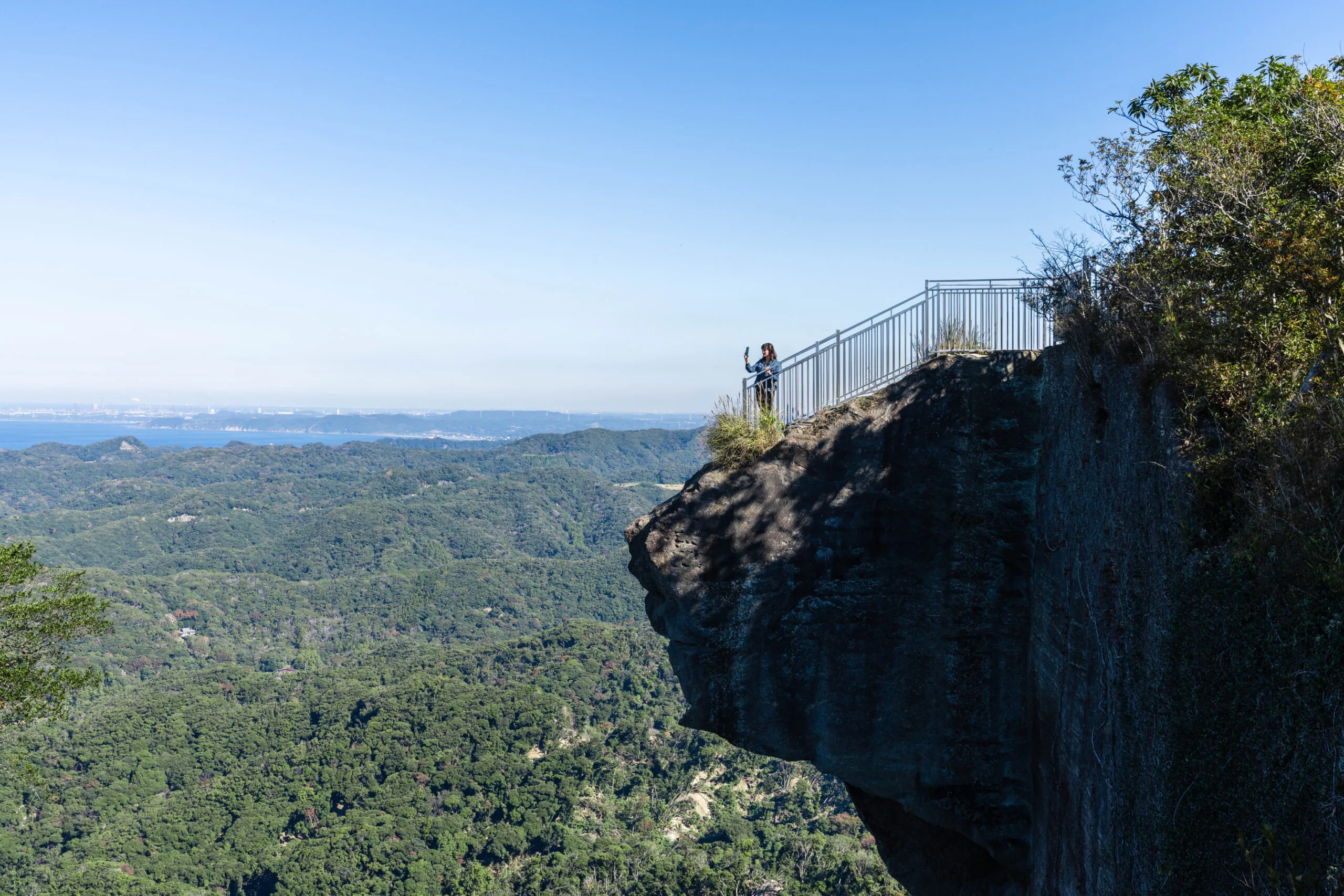
Things to Do | Visit Chiba | Latest update:2025/02/20
Contents
How to Get There by Ferry or TrainTwo Ways to the Top: 1) Ride the RopewayTwo Ways to the Top: 2) Hike Up from the Mountain's BaseThe Sites and Sights atop the MountainJust across the bay from Tokyo, you’ll find a mountain ridge with a peculiar shape. It looks to have jagged “teeth” that travel at an angle along the top, appearing as a saw from afar. Known as Nokogiriyama in Japanese, which means “saw mountain,” Mt. Nokogiri has historically beckoned stone carvers and explorers alike with its unique shape. The burgeoning city of Edo, modern day Tokyo, across the bay called for a huge quantity of stone, for anything from home foundations and fortresses, to retaining walls in canals, and even gravestones. It was soon found that this peculiar mountain harbored some very high-quality rock that was easy to work with, durable, and heat-resistant, and massive mining operations soon began. Chiba’s southern area is classically known as Boshuu, and the prized rock within Mt. Nokogiri (Nokogiriyama) was named Boshuu stone, giving it a branding for the architects and carpenters of Tokyo. These mining operations, cutting into the mountain at an angle, would not only accentuate the already saw-like profile of the mountain, but with the addition of monuments, statues, and walking trails, would eventually transform the entire mountaintop into a destination for travelers.
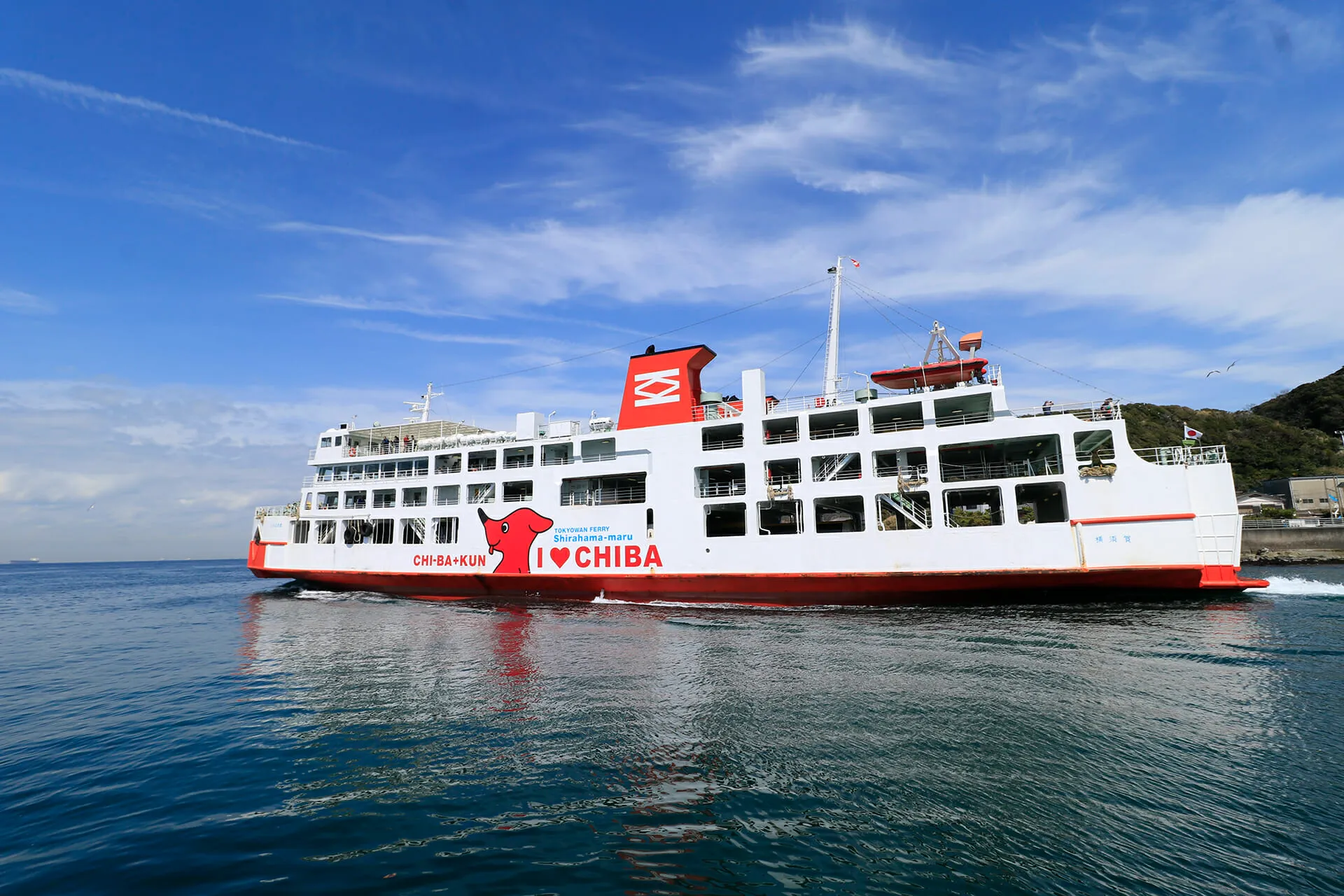 Tokyo Bay Ferry
Tokyo Bay Ferry
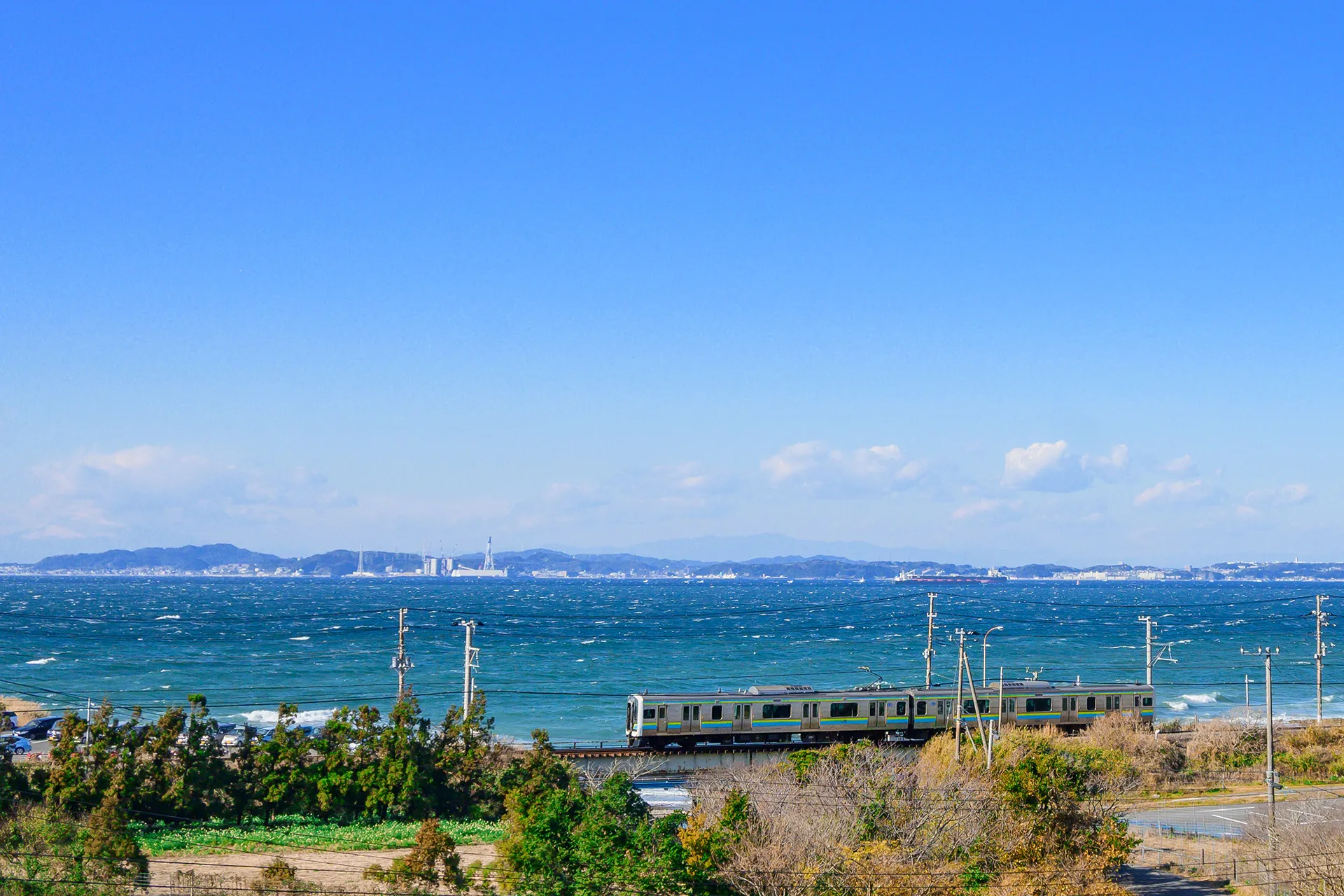 JR Uchibo Line
JR Uchibo Line
Mt. Nokogiri is best seen from the surface of Tokyo Bay. “How is that possible?” you may ask. The Tokyo Bay Ferry, going back and forth between Kurihama and Hamakanaya ports will not only take you directly to the base of the mountain, but also let you take in its splendid profile from afar. A train ride to JR Hamakanaya Station (Uchibo Line) will also put you at the base of Mt. Nokogiri. Whether you arrive by ferry or train, you’ll then have a couple options to the top: a hiking trail, if you’re looking to save the view from the peak for later; or the ropeway, lifting you up the mountain’s sheer, forested face and treating you to a panoramic view of Tokyo Bay and Chiba’s rugged coastline.
The train station and ferry terminal are both located in the port town of Kanaya, which is found at the base of Mt. Nokogiri. If you’d like to explore more of the area, support local establishments, or even stay the night, please check the link below for our Kanaya recommendations.
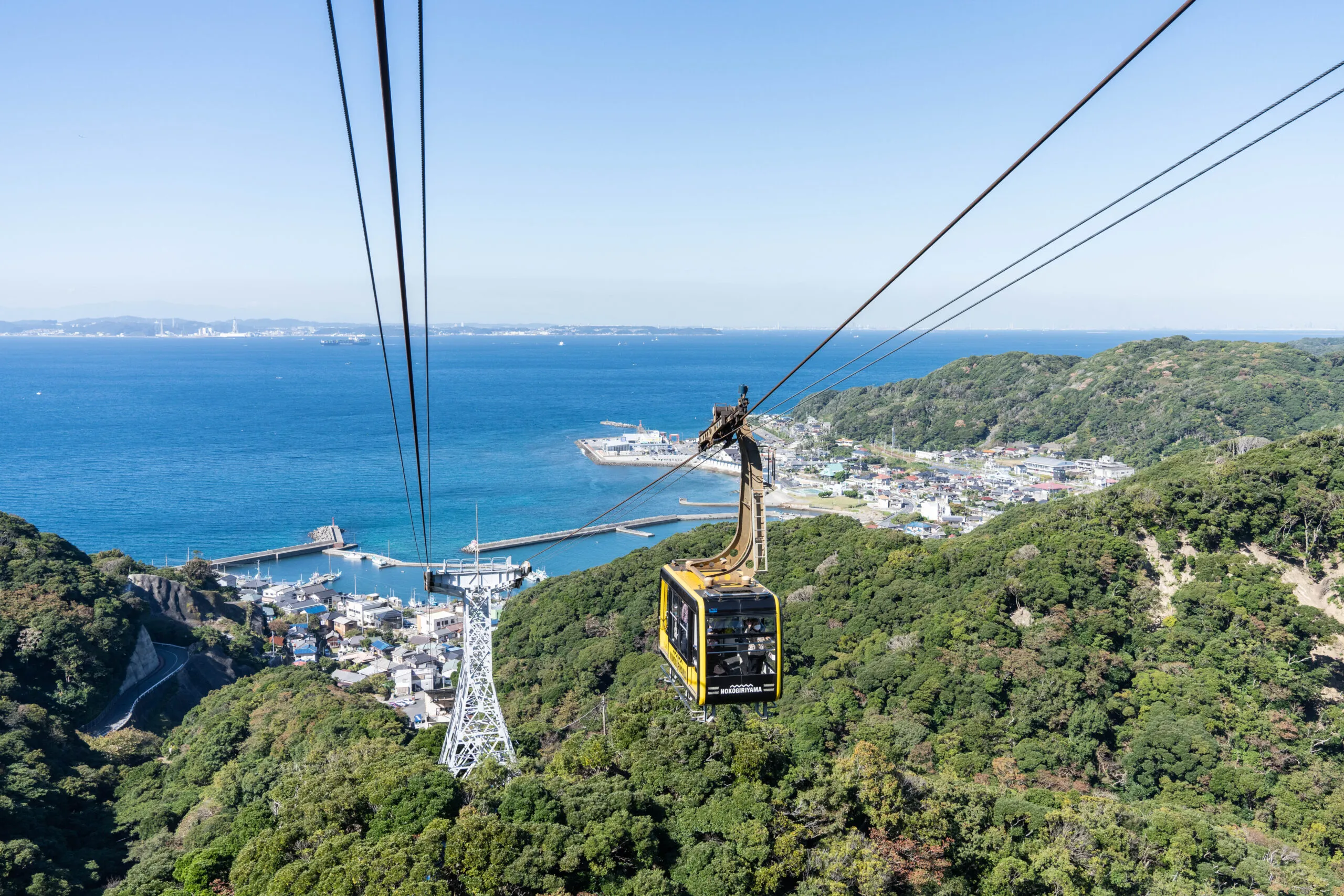
Most visitors choose the ropeway route to the top. Here you’ll find a cafe restaurant serving up easy lunches like curry rice and ramen, and also a souvenir shop with snacks like grilled dango. It’s a good starting point if you plan on mixing lunch into your Nokogiri adventure.
The ropeway does occasionally shutdown due to strong winds, so before you set out on your trip, we advise you to check their social media accounts for the latest updates. When service is suspended, they’ll tweet about it in Japanese and English:
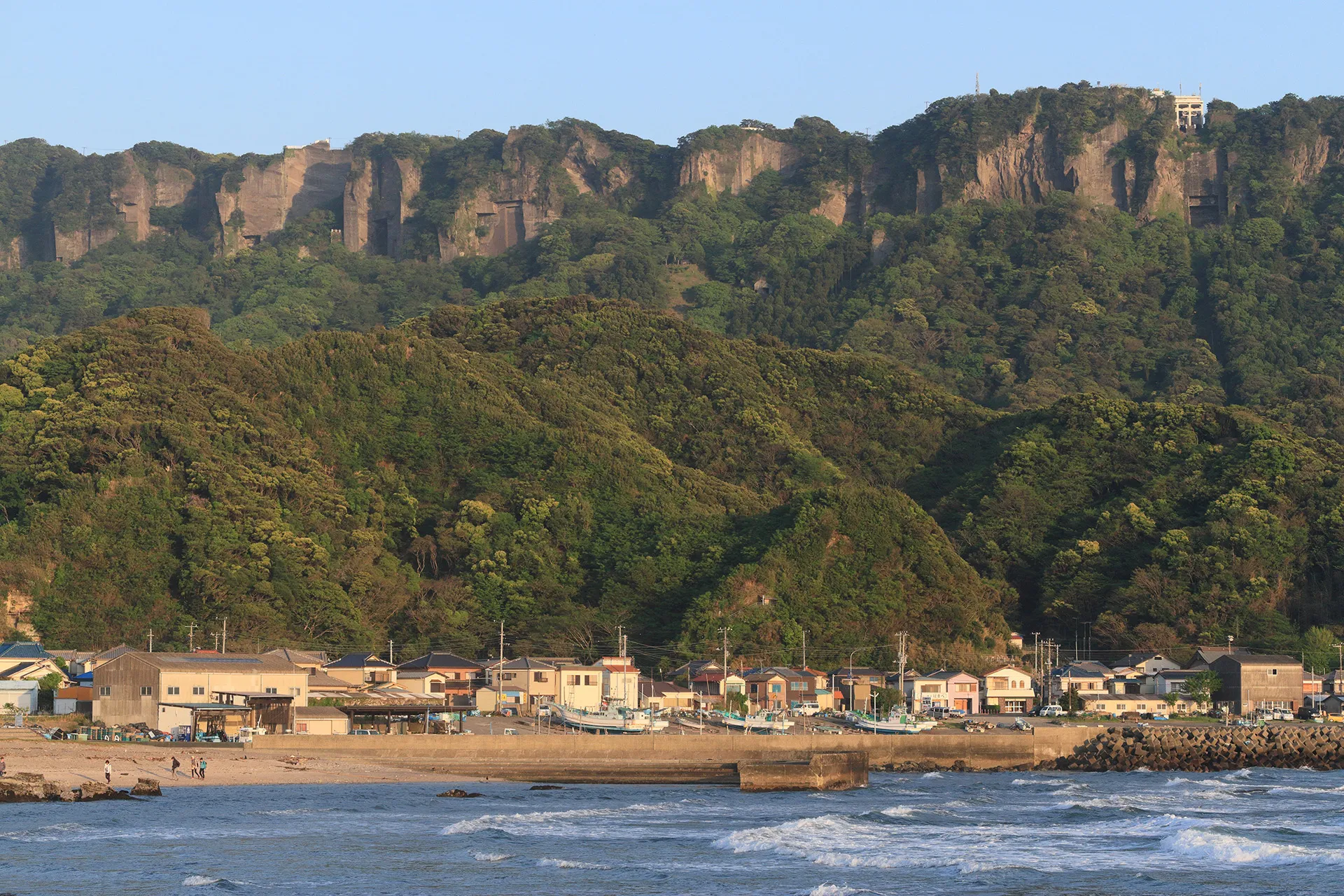
For those interested in taking the hiking course up the mountain instead of riding the ropeway, you can read our Mt. Nokogiri hiking trail guide via the button below:
Once you reach the ropeway station atop the mountain, you can continue your journey on a network of trails. The famous sites here are within the grounds of Nihon-ji Temple, and to pass through the entrance gate to the grounds you will have to pay an entrance fee of 700 yen for adults and 400 yen for children. Down the first trail you’ll come to the first major attraction: the Hyakushaku-Kannon, a 100-foot monument of the female Bodhisattva, Avalokiteshvara. Carved directly into the mountainside, not only is this a uniquely conceived monument, it also shows the way in which slabs of stone were systematically cut from the mountain. The precision of the mining operations of the past are nearly as impressive as the artwork itself!
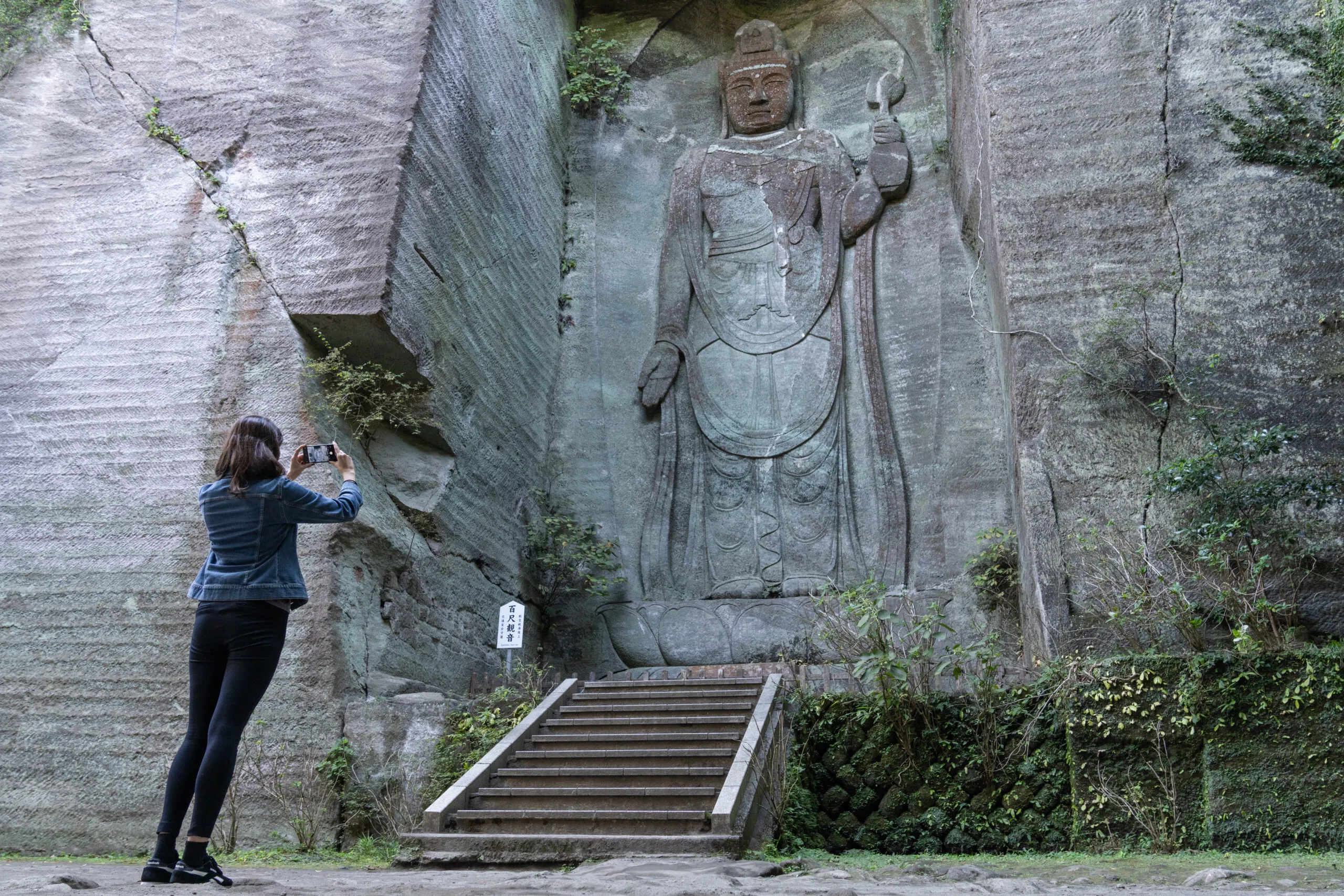
Sitting above this magnificent carving is the most popular lookout point on the whole mountain. The name of this spot, Jigoku Nozoki, (lit. Peek into Hell or Peeking into Hell), is a frightening name, but only alludes to the steep drop off at the edge. The view itself is heaven if anything! You’ll see the urban expanse of Tokyo to the west, the far-reaching green of Chiba’s nature to the north and east, the Pacific Ocean to the south, and on a clear day, Mt. Fuji towering over it all.
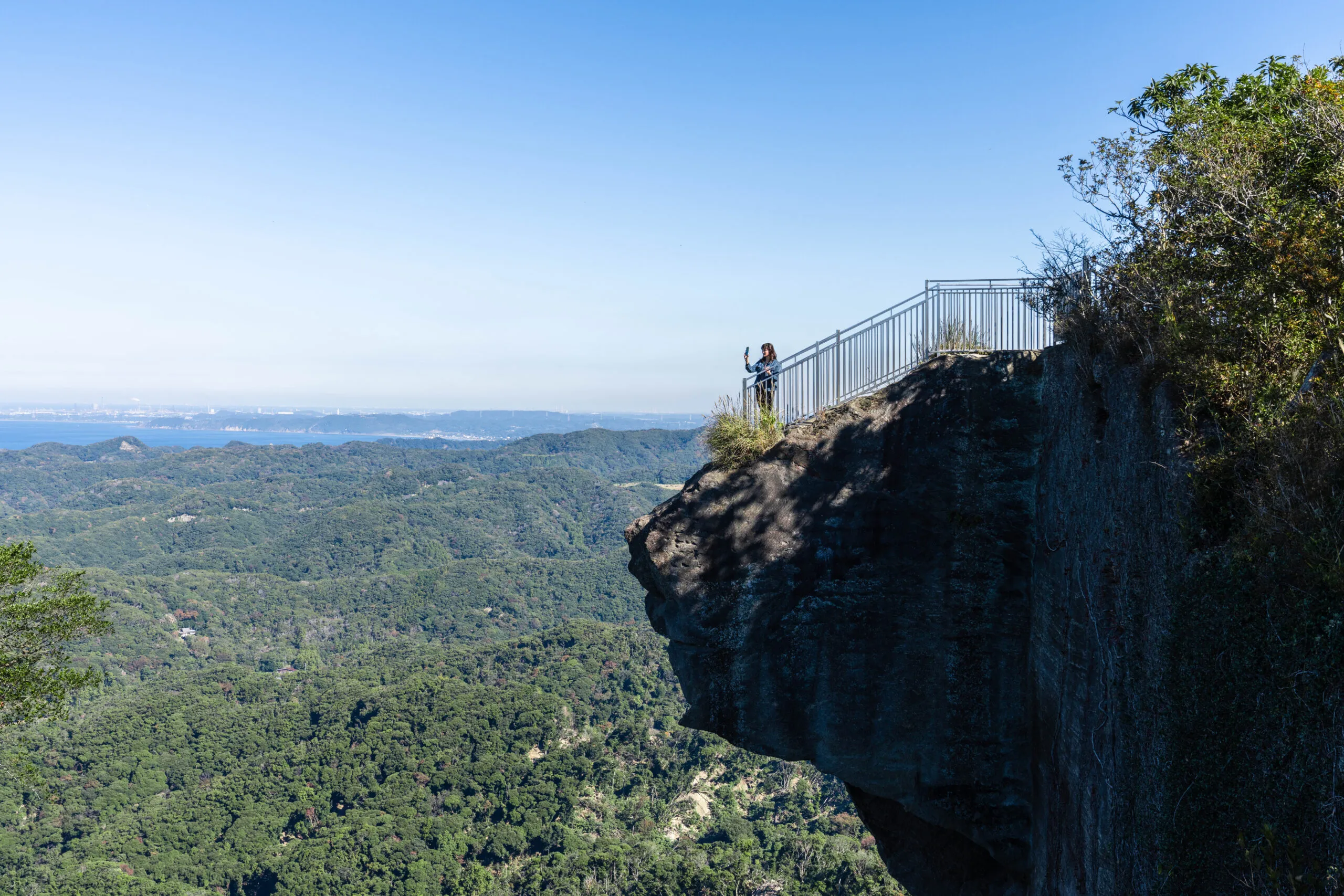
Carvers and sculptors alike gathered at this mountain for both work and pleasure, and you can see their handiwork surviving the test of time here. Along the walking trails you’ll see the cliff-sides adorned with smaller Buddhist statues. Stick to those trails and eventually you’ll come across one of the largest stone Buddhas in Japan.
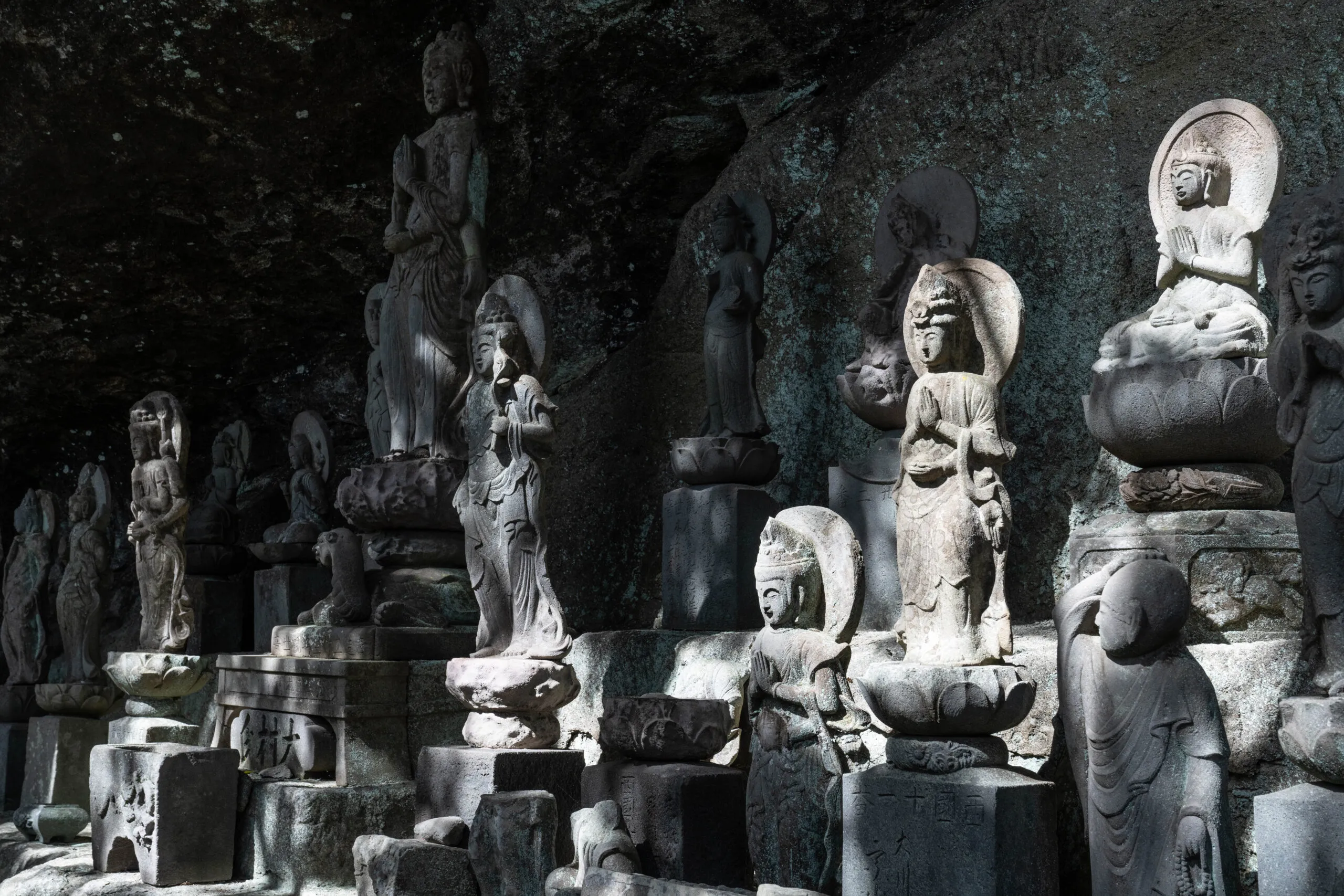
Once you arrive, you’ll want to take a moment to bask in its splendor. Many visit Kamakura for the large bronze Buddha statue, but the stone one here at Nokogiri is arguably more picturesque, surrounded by the rugged yet beautiful nature of southern Chiba.
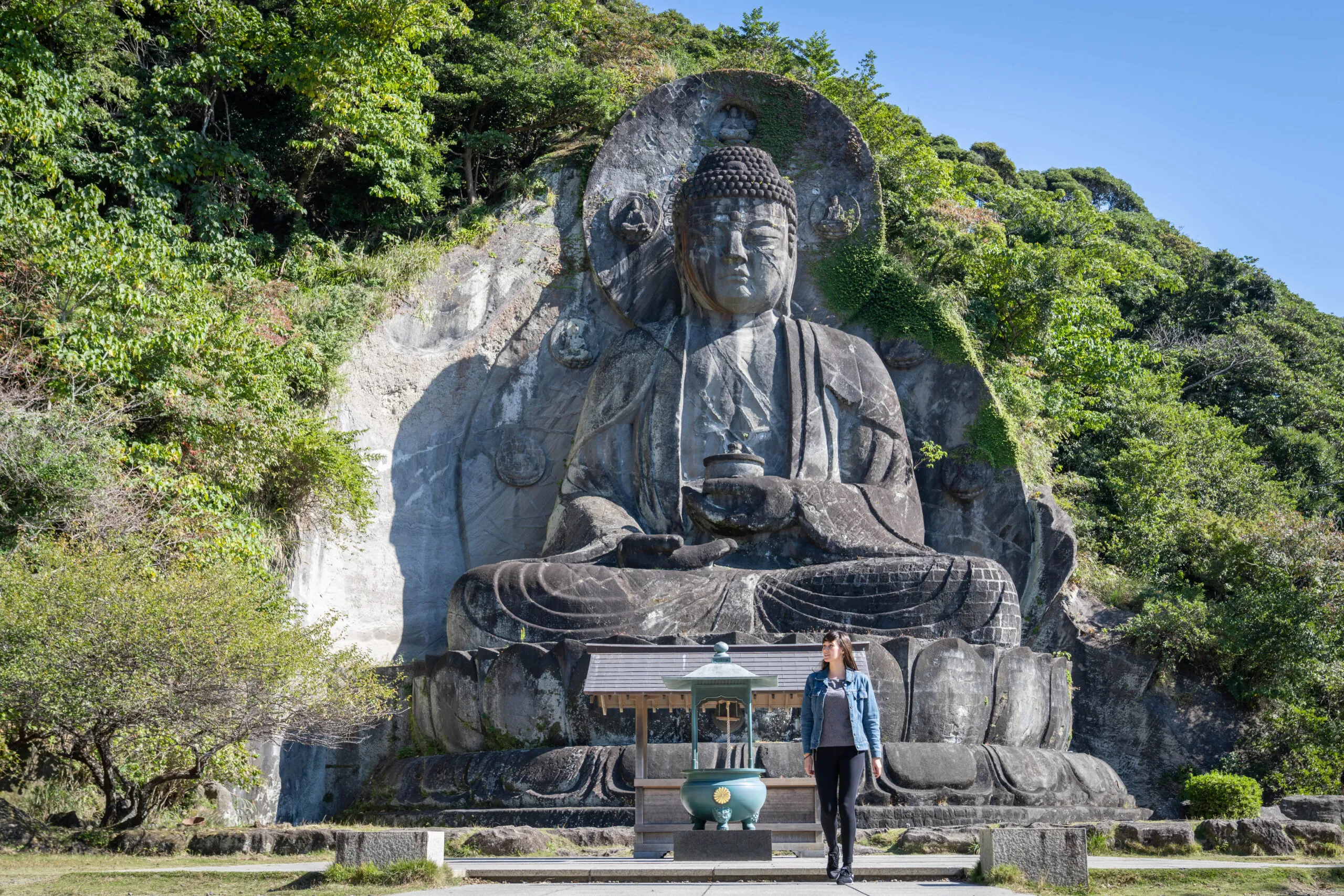
Come for a bit of healthy walking and panoramic views, but also catch a glimpse of Japan’s history of stonework. Across the bay on the ferry, or around it on the train, this is a fantastic day trip from Tokyo, and you’ll have no shortage of good food either at the ropeway station or the port nearby!
Nokogiriyama, Kyonanmachi, Awagun
(Mt. Nokogiri Ropeway: About a 10-minute walk from Hamakanaya Station on the JR Uchibo Line or the Tokyo Bay Ferry Terminal at Kanaya Port.)
+81-439-69-2314 (Mt. Nokogiri Ropeway)
Accessibility